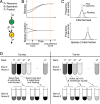Artificially selecting microbial communities: If we can breed dogs, why not microbiomes?
- PMID: 31469824
- PMCID: PMC6716632
- DOI: 10.1371/journal.pbio.3000356
Artificially selecting microbial communities: If we can breed dogs, why not microbiomes?
Abstract
Natural microbial communities perform many functions that are crucial for human well-being. Yet we have very little control over them, and we do not know how to optimize their functioning. One idea is to breed microbial communities as we breed dogs: by comparing a set of microbiomes and allowing the best-performing ones to generate new communities, and so on. Although this idea seems simple, designing such a selection experiment brings with it many decisions with surprising outcomes. Xie and colleagues developed a computational model that reveals this complexity and shows how different experimental design decisions can impact the success of such an experiment.
Conflict of interest statement
The authors have declared that no competing interests exist.
Figures



Comment on
-
Simulations reveal challenges to artificial community selection and possible strategies for success.PLoS Biol. 2019 Jun 25;17(6):e3000295. doi: 10.1371/journal.pbio.3000295. eCollection 2019 Jun. PLoS Biol. 2019. PMID: 31237866 Free PMC article.
References
Publication types
MeSH terms
LinkOut - more resources
Full Text Sources

